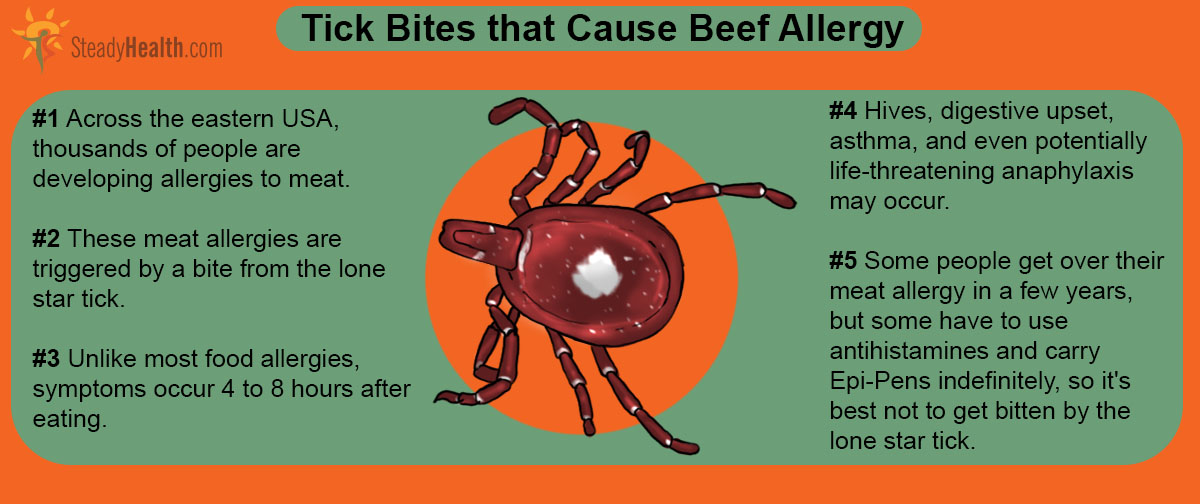Table of Contents
Autumn Bloom didn't think much of the tick that attached itself to her wrist when she took a walk in the woods. Her husband removed it with tweezers, and the bite didn't cause itching, inflammation, or redness. Just part of walking through tall grass on a hot summer day, Autumn thought.

Then about two months later, Autumn woke up gasping for breath about six hours after joining friends for a steak dinner. Painful, purple hives popped out all over body, and the swelling of her lips and in her throat made it almost impossible to breathe. Rushed to a hospital emergency room, Autumn had only minutes to live when she was given an injection of epinephrine and intravenous antihistamines.
A Severe Food Allergy
Autumn's doctors eventually figured out that her symptoms were caused by an allergy to red meat. But Autumn had eaten meat every day for years and years without ever having any problems. Why should a meat allergy, a potentially fatal meat allergy suddenly cause problems.
Like thousands of people in the eastern United States, Autumn developed a meat allergy after being bitten by a specific kind of tick, Amblyomma americanum, the lone star tick.
In recent years, it has also been found in Central American and Northern South America. The lone star tick prefers to live in underbrush under large trees.
The lone star tick can transmit a disease called STARI (Southern tick-associated rash illness), which has superficial symptoms similar to Lyme disease without the more severe symptoms. This tick does not transmit Lyme disease. However, a bite from the tick can sensitize the human immune system to a specific sugar that is found in meat, almost as if the tick wanted to keep any passing meat-producing animals for itself.
How the Lone Star Tick Primes the Immune System for Allergy
The immune system recognizes the microorganism that causes STARI by finding strands of a sugar called galactose-alpha-1,3-galactose, or alpha-gal for short. White blood cells are programmed to attack any cell they find coated with alpha-galactose, and usually the immune system "learns" how to attack the STARI microbe with a massive assault once it has won its battle against the infection.
See Also: Ten Tips for Avoiding and Removing Ticks
This new programming of the immune system protects the body against any infections from future lone star tick bites. Unfortunately, certain kinds of meat also contain large amounts of alpha-galactose.
All of these foods contain small amounts of the alpha-galactose sugar. The immune system doesn't begin its attack until it senses the sugar, digested from meat, in the small intestine. At first, there may be diarrhea. Then as some of the alpha-galactose finds its way into the bloodstream, the immune system attacks it wherever it concentrates, especially in the lungs and in the skin.
- Vanderbilt University Medical Center. "Red meat allergies likely result of lone star tick." ScienceDaily. ScienceDaily. 20 February 2014. <www.sciencedaily.com/releases/2014/02/140220102727.htm>
- Photo courtesy of John Tann by Flickr: www.flickr.com/photos/31031835@N08/6368338667


Your thoughts on this